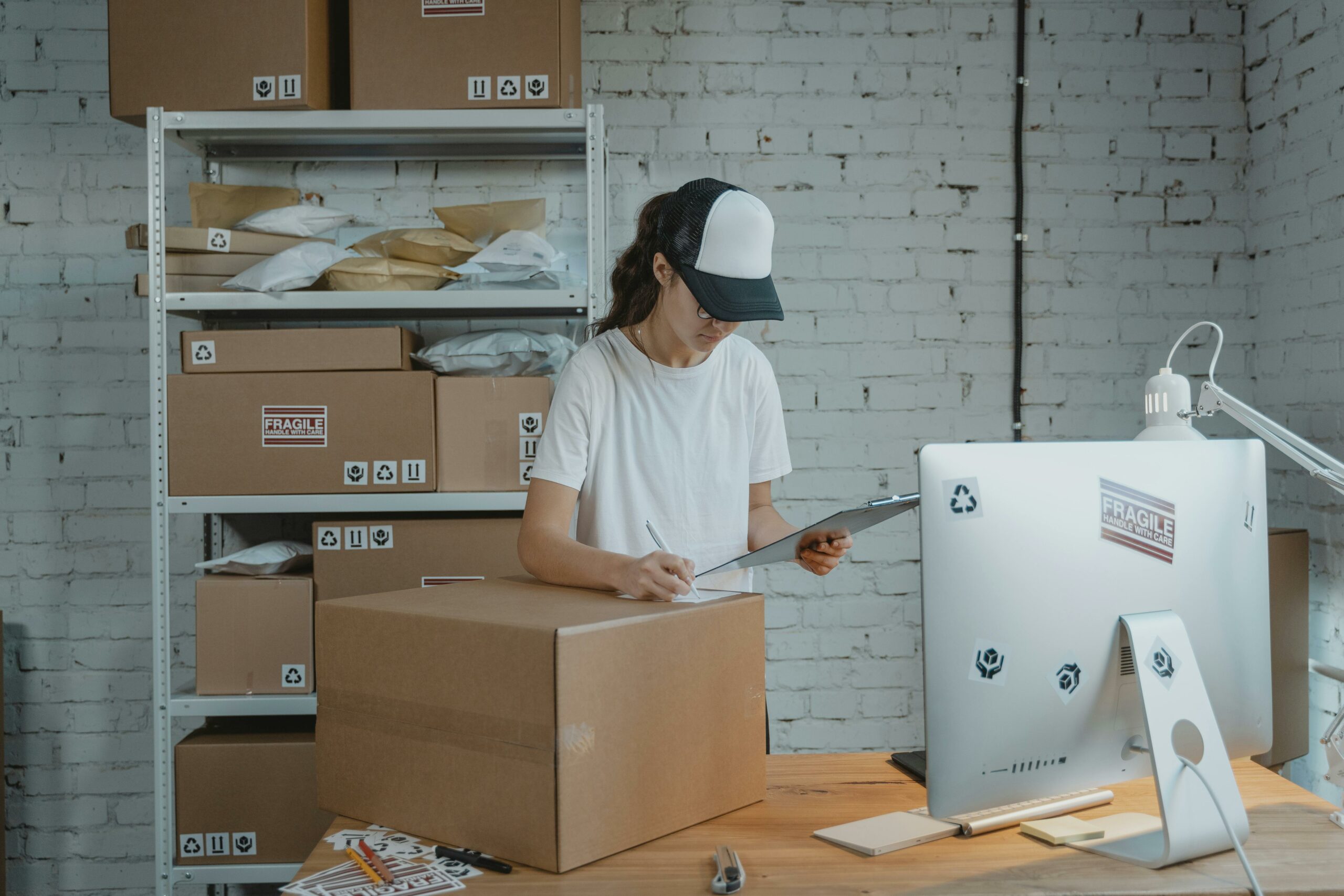How important are customers to a business? It’s a trick question, because without customers you don’t have a business! So, the next question is, what do you think is more valuable to a business and its success, first-time buyers or repeat customers?
Today, we will take a look at returning customer rate, why it’s an important metric for your business, and how you can better your chances of encouraging repeat buyers.
What Is a Returning Customer Rate?
Returning customer rate, also known as repeat customer rate, is an eCommerce metric that measures the number of current customers who have made more than one purchase in a specified time period. This includes new customers who have purchased from your business and decided to purchase again within a day, month, year, etc.
Why Is Returning Customer Rate Important for My Business?

Returning customer rate (RCR) is a metric that signals how well you are performing in terms of customer experience and customer loyalty. This KPI (key performance indicator) shows you how good your business is at encouraging repeat buying. This valuable metric is often measured together with other essential eCommerce metrics such as CLV (customer lifetime value) and customer retention rate.
CLV – shows you how much a customer spends on your products during the span of an average business relationship
CRR – how many customers stay with you or are left over after a period of time has lapsed
CLV and CRR signal customer loyalty. By tracking these metrics, you can see the health and performance of your customer service, marketing, retention strategies etc.
If you have a low returning customer rate, this will negatively impact your CLV and CRR. This subsequently could lead you into a corner where you would have no choice but to focus on acquiring new customers. This does not come cheap, but it would be the only way for your business to survive. This is a sign that your business isn’t growing as fast as it maybe should. Naturally, this also means your business isn’t as profitable as it could be.
A low RCR indicates that your customers were not satisfied with your business in one aspect or another. This indicates an issue along the customer journey that you need to address.
Some potential problem areas include:
- Pricing – Products are not priced competitively
- Product Info – Product information in unclear, incomplete, or misleading
- Customer service – Support is limited or subpar
- User Interface – Navigating a site or app is not intuitive
- Post purchase experience – Lack of after-purchase support
- Site Speeds – Product pages and images take too long to load
- Checkout – Checkout experience or process is confusing
How Do You Calculate Returning Customer Rate?
Returning customer rate is calculated by dividing the number of returning/repeat customers by the total number of customers. Then it is multiplied by 100 since RCR is represented as a percentage value. So, the formula looks like this:
RCR = RC (returning customers)/TC (total customers) x 100
What Is the Ideal Returning Customer Rate?

In a perfect world, you’ll want to have every customer come back to make another purchase. Unfortunately, that isn’t the case in reality.
Your ideal returning customer rate will vary depending on the products you offer and the industry you are in. Generally, eCommerce businesses with a rate of 20-30% are considered to be doing well. That means that you can expect to get repeat purchases from only 20-30% of the total number of people who have bought from your store, and that’s only if your brand is one of the relatively popular ones.
However, that does not mean you should be comfortable within this range. Businesses need to nurture consumer relationships, cut down on customer acquisition costs, step ahead of competitors, and increase profitability and business growth. Even if your brand isn’t a huge household name, you can develop better customer service practices to build a higher returning customer rate than the bigger names in your niche.
How Do I Improve My Returning Customer Rate?
As an online seller, you should be doing everything you can to ensure that your customers make repeat purchases and drive that number as high as possible. What strategies and tactics can you implement to improve your returning customer rate?
Look at Customer Feedback
One of the best sources of information is your customers themselves. Customer experience can directly affect your returning customer rate and customer retention. When there are so many areas involved in the customer journey on your site or app, checking the reviews, customer help emails, and even live chat logs can be a great place to start.
See what your customers are struggling with and see if it’s a common problem. Listening to your customers is a win-win situation. If you don’t have a means for customers to provide feedback, we highly suggest you implement a system.
Enhance Post Purchase Experience
A lot of the time businesses put so much focus on marketing and sales that they forget about optimizing the post-purchase experience. It’s more than just making a sale, especially when you want your customers to continue purchasing from you.
A lot of difficulties can pop up after the purchase has been confirmed. Think about a customer needing assistance with their shipping details and tracking order numbers. Make sure customers can also contact you just as easily for any post-purchase queries or concerns they may have.
Customers will not come back if they think you aren’t as accommodating as you were during the sales process. Customers notice when a business is focused on nurturing a relationship instead of merely completing a transaction.
Better Refunds and Returns Policy
Now it may seem counterintuitive at first to optimize returns and refunds, but a negative returns experience can turn customers off from your brand for good. And bad news travels much faster than good news!
Make sure your refund and returns terms are communicated upfront and clearly. Nothing can frustrate a customer more than a complicated and confusing returns process. A smooth returns and refunds process is a sign that you put customers first – something they will notice.
Offer Elite Membership
For most enterprises, it’s the best approach to keep clients returning to buy more. Retailers of all sizes and in any industry can offer users the freedom to enlist themselves into a unique customer or product tier.
Retargeting Campaigns
Another way to improve your returning customer rate is through retargeting campaigns. Retargeting is the process of delivering an ad to members of your target audience who may have seen an ad from you already. You can, however, tweak the targeting parameters to target customers who have bought from you before to encourage them to purchase from you again.
Note: It’s always wise to determine your ideal customer ahead of time. This can save you from your ads being served to those who are less likely to be a returning customer.
Email Campaigns
Emails are more than just a helpline for your customers. They can also be a means for you to engage with them after they’ve purchased. Building an email list from customer info can benefit your returning customer rate in different ways. You can inform them about discounts, promotions, seasonal sales, and more deals to pique their interest.
Loyalty Benefits
Loyalty programs have proven to be an effective way to encourage customers to keep spending.
Implement a rewards system for customers who continue to purchase with you. For one, this acts as a means of thanking your customers for their patronage. It also encourages them to stay with your brand. This is especially true for customers who have been with you for a lengthy period of time. In their minds, it would take them a long time to build these kinds of benefits with another brand, making them less likely to switch to a competitor.
Additionally, implementing a rewards points system is a simple way to incentivize repeat purchases. You can create your own criteria and notify customers when they’ve earned points or qualify for a reward. These rewards can be discounts, freebies, etc.
Membership Benefits
Businesses often offer premium versions of their services to customers who want added benefits for a monthly or annual subscription fee. These benefits can include priority advantages like free shipping, exclusive products, and exclusive deals.
Similar to loyalty benefits, this can incentivize repeat purchases from consumers that see the value of premium offers. The great thing about this is that it doesn’t take away from regular customers. Just make sure the benefits are enticing enough to warrant the bigger price tag.
What Is the Best Software for Handling Returns?

As mentioned earlier, improving returning customer rates includes improving your returns and refunds processes. It’s pretty logical if you think about it.
Return management software is a very useful tool to help business provide the best returns experience possible for both the seller and the consumer. These software tools can automatically generate tracking numbers, and even provide useful insights on which products get returned the most.
Some of these return management programs include:
Conclusion
The bottom line is that customer satisfaction drives sales. A high returning customer rate is a good indication that your business is succeeding at providing an excellent consumer experience. If not, look at how well you serve and make improvements to boost your retention rate.







